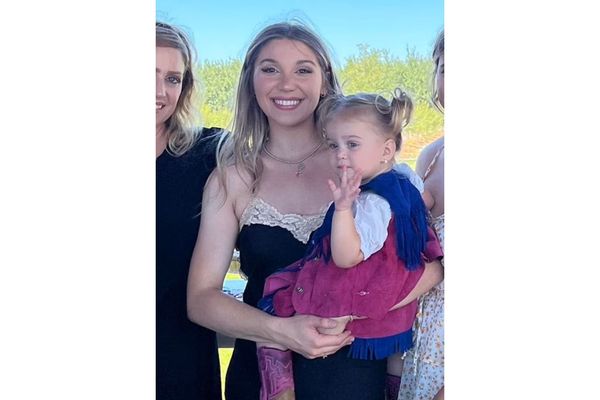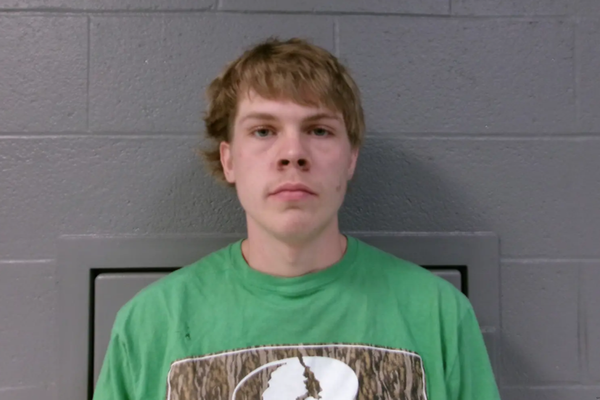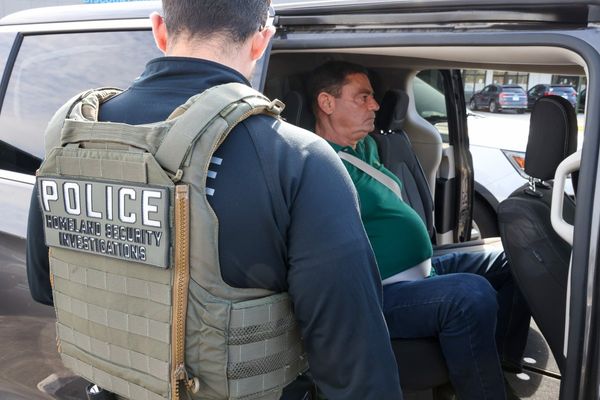
Ollie Olsen, the maverick Australian post-punk and electronic music innovator, died on Wednesday after a long struggle with multiple system atrophy, a rare neurological disease which he “fought like a Viking”, according to a statement shared on his social media accounts. He was 66.
Olsen – who changed his name legally from Ian Christopher Olsen to Ollie Jngbert Christian Olsen in the early 90s – had been inducted into the Music Victoria Hall of Fame earlier this month, with the organisation describing him as “a true artist and visionary in every sense of the word”. He was no chart-topper, but was deeply respected by musicians who bothered them more regularly; notably, the only time Michael Hutchence stepped outside INXS was to collaborate with Olsen.
That was in 1986, when Richard Lowenstein tapped Olsen to be the music director for his film Dogs in Space. Hutchence, then at the absolute peak of his fame, played the lead. The film is a grimy look back at Melbourne’s post-punk scene of the late 70s, of which Olsen was a central player in acts such as Whirlywirld and Young Charlatans.
Hutchence recorded Olsen’s song Rooms for the Memory for the soundtrack. The only piece of music recorded under Hutchence’s own name during his lifetime, it reached Number 11 on the Australian charts early in 1987. Two years later, they collaborated again under the name Max Q, producing minor hits Sometimes and Way of the World.
Olsen was born in Melbourne in 1958. His first band, the Reals, was one of Melbourne’s first punk acts and featured future Sacred Cowboys singer Garry Gray. In late 1977, Olsen left to form Young Charlatans with guitarist Rowland S Howard, bass player Janine Hall and drummer Jeffrey Wegener.
They were, writer Clinton Walker noted, a supergroup from the outset; Howard, Hall and Wegener would all go on to bigger things in the Birthday Party, the Saints and Laughing Clowns, respectively. Howard’s classic Shivers was originally a Young Charlatans song, later recorded by the Birthday Party under their early name the Boys Next Door.
But Olsen had perennially itchy feet. Moving away from guitars, he formed Whirlywirld, pushing into the much harder, synthesizer-based territory then occupied by New York pioneers Suicide and the UK’s Throbbing Gristle – a sound Depeche Mode would spend the rest of their careers chasing and refining, with infinitely greater success.
Whirlywirld played a grand total of 14 gigs as part of Melbourne’s so-called “little band” scene (Olsen initially refused to play live), releasing two EPs before Olsen relocated to London in 1980 on the recommendation of an impressed Iggy Pop. He later rerecorded several Whirlywirld songs for the Dogs in Space soundtrack.
Olsen formed experimental outfit Hugo Klang in London, eventually returning to Australia in 1983. His next band, Orchestra of Skin and Bone, “proved incomprehensible to local audiences”, according to Australian music historian Ian McFarlane. Later came NO, an aggressive industrial act that anticipated Ministry; their sole full-length album was called Once We Were Scum Now We Are God (1989).
Yet Olsen could still attract the biggest names to work with. With friend Troy Davies, he formed Ecco Homo, and Hutchence appeared in the clip for their first single Motorcycle Baby in 1988; in 1990, U2’s Bono and the Edge guested on the second, New York New York. “They were on the Rattle and Hum tour, so they were wearing cowboy hats,” Olsen drily observed.
And his most radical move was still to come. In 1990 he formed Third Eye, which put him on the cutting edge of acid house and ambient techno. He released a cover of Russell Morris’s epochal 60s flower-power anthem The Real Thing in late 1990; a 1993 album, Ancient Future, was as trance-inducing as anything by the Orb or KLF.
By then, he had become a key figure in Melbourne’s rave scene, a virtual deity to those aware of his history in the electronic music movement he had helped birth in Australia. Writer Chris Johnston told me, by email, that “he had the long hair and the robes and the beads back then, a gorgeous Svengali type of guy to the new young crew”.
His Psy-Harmonics and Psychic Harmonies labels provided an outlet for many of these like-minded younger artists. “Ollie was a great collaborator, he rarely did music alone,” Johnston said. “He always had a mad squad of artists and misfits around him – he had a great knack of bringing people together.”
In his later life, Olsen composed film and television scores and performed guest lectures at various universities before retiring from music due to ill health. In 2023, Magic Dirt singer Adalita collaborated with Mick Harvey and Models’ Andrew Duffield on a cover of Rooms for the Memory to raise funds towards his care.
Olsen died peacefully with his wife Jayne, whom he married on 9 October, by his side. Among a flood of tributes from fellow musicians, Tony Buck – drummer and percussionist for internationally celebrated improvisational trio the Necks – described him simply as “one of the greats”.
This article was amended on 18 October 2024 to correct the release date of Adalita’s collaboration with Mick Harvey and Andrew Duffield, and to clarify that Rooms for the Memory was the only piece of music recorded under Hutchence’s own name during his lifetime.







